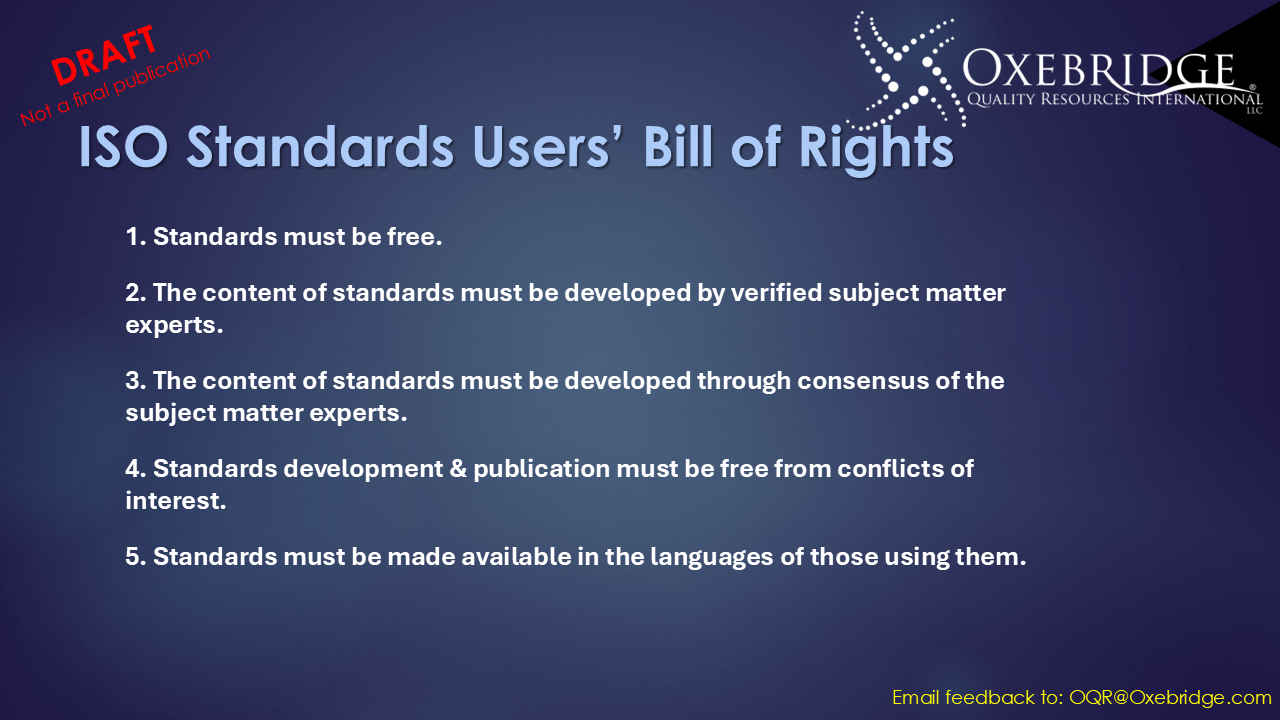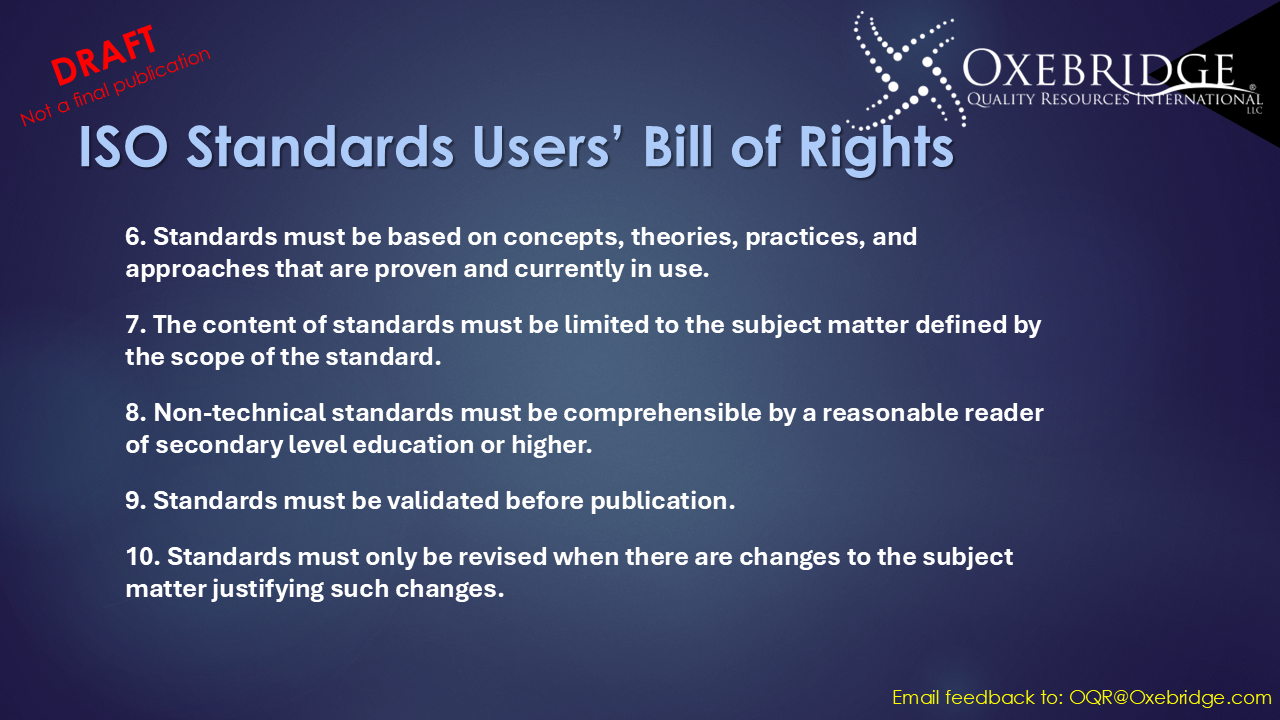Oxebridge is developing an ISO Standards Users’ Bill of Rights and seeks your feedback before finalizing and promoting it within the industry. A copy of the draft Bill of Rights may be downloaded in PDF format here.
You may provide your feedback by emailing OQR@oxebridge.com.
1. Standards must be free.
Increasingly, ISO standards are being incorporated into laws and regulations. Because these apply to all persons, the texts must be accessible by all persons.
Access to standards must not be limited by the financial status of the user nor require the user to have special banking privileges (credit cards, checking accounts, internet banking, etc.).
2. The content of standards must be developed by verified subject matter experts.
Persons crafting the text of standards must be proven experts in their field, fully vetted and approved prior to their admission into standards committees.
While nations may delegate their representatives, the representatives must be able to demonstrate experience and competence in the subject matter.
3. The content of standards must be developed through consensus of the subject matter experts.
ISO’s current definition of consensus results in the opposite effect, where text is automatically treated as valid the moment it is written, and impossible hurdles (“sustained opposition”) are enforced to prevent changes.
Instead, standards must be based on true consensus, ensuring an established period of time is allotted for all voices to be heard and differences resolved. The time period must simultaneously be sufficient to ensure adequate feedback while maintaining the overall efficiency of the development process. The responsibility for defending text must be shifted back on the standards developers themselves.
4. Standards development & publication must be free from conflicts of interest.
Currently, private consultants dominate ISO standards committees; these individuals have a financial incentive to make standards complicated in order to sell their services afterward. Publishing companies (e.g., BSI, ANSI, ISO, etc.) then have a financial incentive to force frequent updates to high-selling standards while letting less popular, but nevertheless important, standards languish without updates.
Instead, users with a potential conflict of interest must not comprise more than 25% of any committee. Committees must establish and perpetually monitor the risks associated with conflicts of interest and take action to mitigate them.
5. Standards must be made available in the languages of those using them.
Increasingly, ISO has sped up development time by removing established time periods for translation. Then, after publication, ISO adds technical, financial, and licensing barriers for countries seeking to translate standards into their home languages.
Instead, ISO must ensure sufficient translation time is allotted during standards development and, after publication, nations must be given the freedom to translate standards into their home languages without licensing or other financial restrictions.
6. Standards must be based on concepts, theories, practices, and approaches that are proven and currently in use.
Increasingly, ISO standards are being written around practices that have never been utilized in the real world or proven in industry (e.g., “risk-based thinking.”)
Instead, standards must collect proven, previously validated practices that subject matter experts agree have been demonstrated to be effective.
7. The content of standards must be limited to the subject matter defined by the scope of the standard.
Increasingly, ISO standards are confusing due to the addition of concepts and requirements not relevant to the subject matter of the standard. This complicates both implementation and conformity assessment of such standards.
Instead, during development, ISO must ensure that each requirement is relevant to the subject matter and remove any requirements that are not.
8. Non-technical standards must be comprehensible by a reasonable reader of secondary level education or higher.
Increasingly, ISO standards include language that is poorly understood by the average user.
Instead, standards must be written so that the average reader can not only understand the requirements but then implement them accordingly. Complicated and confusing text must not be a barrier to access to standards.
9. Standards must be validated before publication.
ISO defines validation as the “confirmation, through the provision of objective evidence, that the requirements for a specific intended use or application have been fulfilled.” ISO does not, however, validate standards against their “intended use,” but merely performs reviews of text prior to publication.
Instead, ISO must test standards in the real world by utilizing volunteer entities to implement draft standards and provide feedback on their utility prior to publication. This must include test (or “pilot”) conformity assessments if a standard is intended for conformity assessment.
10. Standards must only be revised when there are changes to the subject matter justifying such changes.
Increasingly, ISO standards are updated purely for rewording of existing text, without any change to requirements and without any benefit to the user. Then, users are forced to purchase such standards despite there being no significant changes.
Instead, ISO standards must only be updated when there is a demonstrable change in the real-world subject matter. ISO must justify the changes made or abort the revision process.









